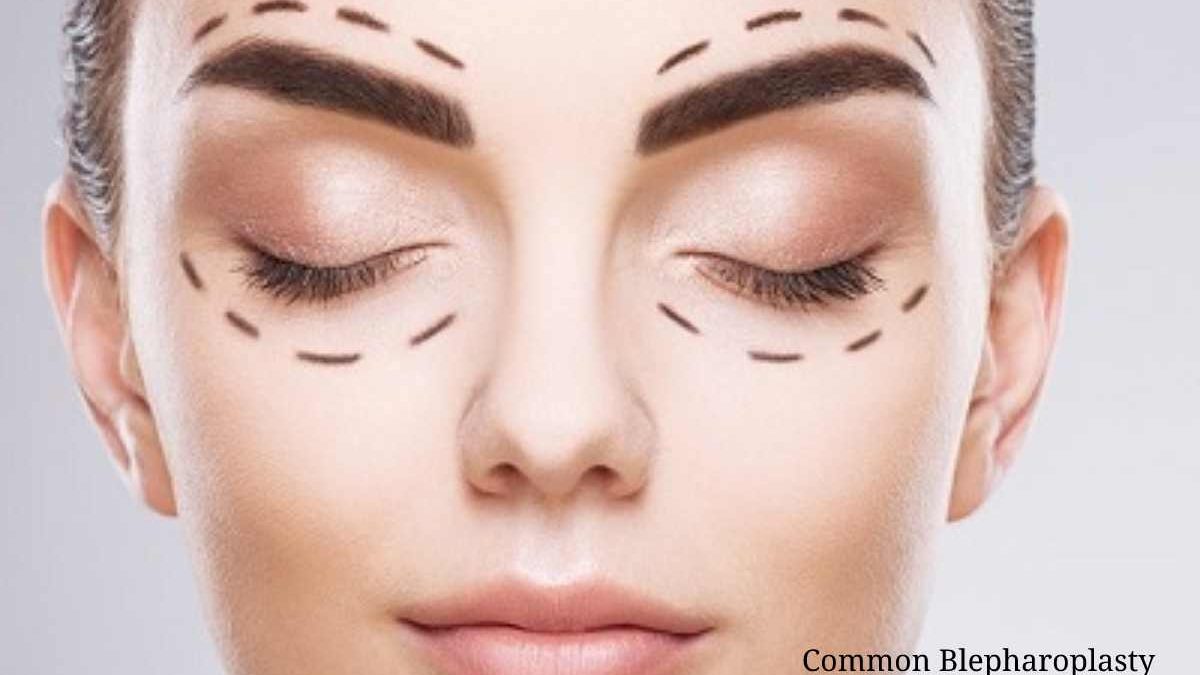Have you heard rumors about blepharoplasty? Do your friends make jokes that involve blindness and sharp knives? Have you seen “real-life horror stories” when it comes to blepharoplasty gone wrong?
Blepharoplasty, also known as eyelid surgery, is a surgical procedure that’s used to remove sagging skin from around the eyes. It’s often regarded as a simple procedure despite myths that might make one believe otherwise.
In this article, I’ll discuss some of the most common myths about blepharoplasty and explain why they’re false.
Table of Contents
Myth No. 1: You will suffer from chronic dry eye as a common side effect
One of the biggest myths about blepharoplasty surgery is that it often leads to chronic dry eye. However, this is not the case at all! When done properly, blepharoplasty can actually reduce symptoms of dry eye by removing loose skin that can trap bacteria and cause irritation.
Realistically, any type of eye surgery carries a risk for the potential for dry eyes after surgery. However, with the modern techniques used by experienced surgeons, those risks are greatly reduced. The best thing you can do to ensure you experience minimal side effects after eyelid surgery is to choose an experienced ophthalmologist or plastic surgeon who specializes in performing blepharoplasties. Your doctor should also be familiar with specialized gloves and/or lubricants that reduce friction during procedures, which may contribute to temporary dryness following your procedure.
Myth No. 2: Undergoing blepharoplasty results in noticeable scars
One major myth surrounding blepharoplasty is that it will result in noticeable scars. In reality, this could not be further from the truth. Blepharoplasty is a surgical procedure to improve the appearance of specific eyelid areas; however, most plastic surgeons use minimal-scarring techniques like an incision within the lash line or lower lids to only remove very small amounts of excess skin and/or fat. This means that any resulting scars are typically very subtle and unnoticeable after healing has occurred.
What’s more, today’s advances in facial plastic surgery have allowed facial plastic surgeons to make incisions much smaller than before. These tiny incisions give cosmetic surgeons greater precision when performing Eyelid Surgery, making it less likely for patients to develop large or visible scarring afterward. So you don’t have to worry about people noticing your results – your eyes will look as natural as ever!
Myth No. 3: You can’t minimize dark circles with blepharoplasty
One of the most common myths about blepharoplasty (eyelid surgery) is that you can’t minimize dark circles with the procedure. This simply isn’t true. Blepharoplasty not only tightens skin and reduces wrinkles, but it also removes sagging tissues and fatty deposits beneath the eyes. All of these things contribute to the elimination of dark circles, giving you a brighter, more youthful look.
That doesn’t mean blepharoplasty will remove all dark circles; some dark circle caused by genetics, hormones, or even medications. But for those dark circles caused by aging or loose skin around the eyes, blepharoplasty can help reduce their appearance.
If you’re considering blepharoplasty to get rid of your dark circles, consult a qualified plastic surgeon who can talk you through all your options and address any other myths and misconceptions about this popular procedure!
Myth No. 4: Blepharoplasty can remove crow’s feet
This is not true! While Blepharoplasty is an effective way to reduce the signs of aging around the eyes, it cannot completely remove crow’s feet. Crow’s feet are wrinkles that form around the corners of the eyes, usually as part of normal aging processes or sun damage. They are very common in adults over 40 and are challenging to treat.
Blepharoplasty can reduce some of the effects of aging and sun damage on crow’s feet but will not be able to completely erase them. Treatments such as injection fillers may help with this problem, and there are also various creams and lasers available that can be used to reduce their visibility. For best results, blepharoplasty should typically be combined with other treatments to achieve the desired outcome – fewer wrinkles around the eyes and a younger-looking face overall.
Myth No. 5: Blepharoplasty is a simple procedure
Blepharoplasty, a surgical procedure used to reduce the appearance of droopy upper and/or lower eyelids, might seem like a simple process. But don’t be fooled – it’s still a serious operation. Contrary to popular belief, blepharoplasty is not a quick fix or minor adjustment that can be done in one visit to the doctor’s office. The surgery could take two to three hours to perform and may require several weeks of recovery time.
In addition, even though the effects of blepharoplasty are usually permanent, you will want to make sure you talk to your doctor about any aftercare treatments that may be necessary. Those treatments could include special eye drops or ointments in order to minimize any bruising and swelling around the eyes after your surgery. Taking these extra precautions will help you get maximum results from your blepharoplasty procedure!
In conclusion, blepharoplasty is a safe and effective way to help improve or enhance the appearance of your eyes. If you’re considering the procedure, make sure to talk to an experienced and board-certified plastic surgeon who can answer any questions you may have about it. Don’t be scared off by myths or old wives’ tales; do your research, weigh all your options, and decide if blepharoplasty is right for you. Best of luck!
Also Read: What Is Coolsculpting – Liposuction, Procedure, Pros and Cons


